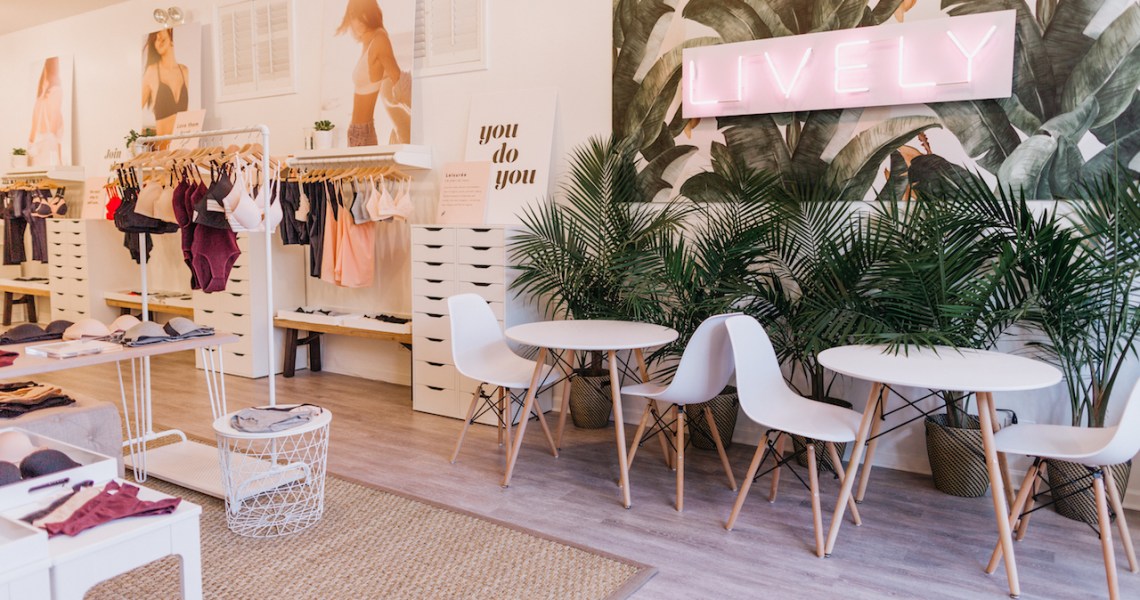This week, a look at the challenges faced by DTC brands that are increasingly embracing wholesale. Scroll down to use Glossy+ Comments, giving the Glossy+ community the opportunity to join discussions around industry topics.
The DTC revolution created some giant brands, from Allbirds to Glossier to Parade. But after the e-commerce boom of 2021 died down by the end of 2022, many of those same DTC mainstays found themselves turning to wholesale to maintain growth.
Just last week, the DTC footwear brand Greats announced it will be abandoning its DTC focus in order to mount a comeback. Brand president Brian Krauss said the brand “needed to go wholesale” in order to regain visibility with customers. Also last week, other DTC-native brands like home brand Grove Collaborative and skin-care brand Futurewise launched partnerships with big retailers including Target, Walmart and Amazon. The week before that, DTC running brand On said it will deepen its partnerships with Nordstrom and JD Sports.
As digital advertising and customer acquisition costs skyrocket, wholesale has become a much more attractive option for fashion brands, even ones that were previously DTC only. But despite the value that brands like Allbirds are seeing in wholesale, there are still involved challenges.
For example, some are finding it tough to stomach the loss of creative control that comes with selling products through a third party.
“I want my customer to have an experience with my clothes. Some of these retailers are so giant, you can’t get any kind of good experience,” said the designer Naeem Khan, who sells 100% through wholesale channels, including large department stores like Bergdorf Goodman and smaller boutiques. “It’s like one doctor seeing 50 patients, and each patient only gets five minutes.”
But for many in the industry, the benefits of this loss of control outweigh the drawbacks.
Ad position: web_incontent_pos1
Caroline Levy, managing director at Full Stride Ventures, said the main appeal of wholesale for DTC brands is getting in front of thousands of people for a fraction of the cost of digital advertising. Full Stride Ventures helped launch DTC underwear and lingerie brands Kindly and Lively, both of which later pivoted to having a wholesale presence. The death of the third-party cookie has let to customer acquisition costs increasing by more than 200% over the last year, according to social commerce company SimplicityDX.
“Just by hanging your hat in a store, you have a lot more eyeballs on your brand,” Levy said. “If you can get in 3,000 stores, then all these people are seeing you without any marketing. And then, if they like your product, they might even come buy from you directly after that first purchase. When marketing channels aren’t working, wholesale can give you scale.”
Of course, retailers have even begun offering their own in-house advertising tools, like Walmart with its Connect platform and Target with Circle. The latter is a key tool that DTC skin-care brand Aptos began using when it entered the wholesale space last summer.
Glossy’s own research on the subject confirmed that wholesale is a big growth factor for brands. Respondents to a November 2022 Glossy survey said, over the prior 12 months, their revenue via wholesale increased more than sales through any other channel. Sixty-two percent of people said the channel’s revenue went up at least somewhat. For comparison, 53% said direct sales increased over that same period of time. Eighty percent of those brands also said they expected their wholesale business to grow in the subsequent 12 months.
Levy said that the brands she works with have found a number of ways to circumvent the loss of creative control in wholesale. For example, some are packing as much brand identity and storytelling as possible into products’ packaging and labels. For example, Kindly, one of Full Stride Venture’s brands, sells its products on branded hangers to help it stand out from other underwear brands at Walmart, its largest wholesale partner.
Ad position: web_incontent_pos2
Another way brands are getting around the problem is by focusing their wholesale strategy on smaller specialty retailers with a specific focus, rather than large, generalist stores. For example, the primarily DTC denim brand Just Black Denim is stocked in more than 1,700 independent boutiques like Maria Luisa in upstate New York and Carol & Kay in Springfield, Missouri. But it’s not in any major department stores, a representative for the brand said.
“Brands can immediately expand their footprint and unlock new retail relationships that help build deeper consumer credibility, by appearing in neighborhood shops consumers trust and love,” said Lauren Cooks Levitan, CFO of wholesale marketplace Faire. “Shelf space in a beloved boutique — the original influencers and trendsetters of their communities — is an amazing accelerant for a DTC business, especially as DTC marketing becomes increasingly expensive, competitive and untrustworthy.”
Other formerly DTC brands are also looking to specialty retail in addition to larger store partners.
“DTC today doesn’t meant that you can’t engage with other parts of retail,” Thakoon Panichgul, designer at his eponymous brand Thakoon, said last year. “We’ve started selling with our old friends at Nordstrom [in 2022] and are looking at some specialty stores around the country.”
Of course, the other big drawback with wholesale is one that has fewer workarounds: inventory scale. Retailers often have minimum order quantities that are difficult for DTC brands to reach.
“You often have to create a lot of product, and that’s a risk for a young company,” Levy said. “Going from making short runs of 100 pieces to a big-box retailer asking you to make thousands is a major challenge.”
Inside our coverage
The industry reacts to Pharrell Williams’ Louis Vuitton appointment
Pacsun launches first-ever branded ‘building tycoon’ on Roblox
In the post-Balenciaga controversy era, can clothing speak for itself?
Want to discuss this with our editors and members? Join here, or log in here if you're already a member.


